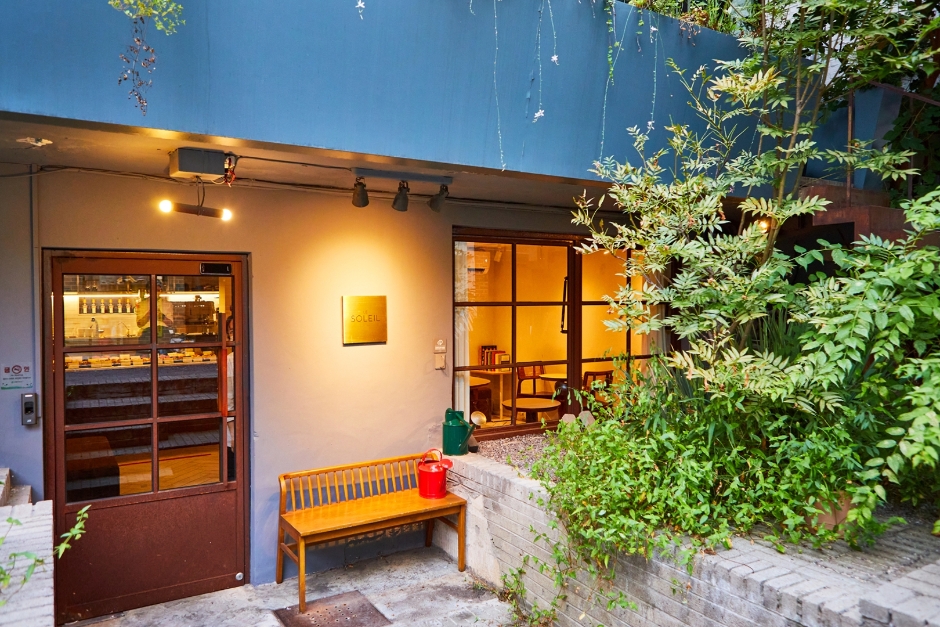PLATFORM PLACE HANNAM[Korea Quality]/플랫폼 플레이스(한남점)[한국관광 품질인증]
4.8Km 2024-06-25
268 , Itaewon-ro, Yongsan-gu, Seoul
+82-2-797-4628
Platform Place Hannam store, located near Itaewon Street in Yongsan-gu, Seoul, sells a selection of overseas brand products, including clothing, household items and kitchenware, stationery, and other designer items. Over 50 brands are featured, including Saint James, Neul, Norse Projects, Blue de Paname, Homecore, and Rocky Mountain Featherbed.The shop is right next to Hangangjin station on subway Line 6, and customers can also use a pay-for public parking lot.
Le Labo - Itaewon Branch [Tax Refund Shop] (르라보 이태원)
4.8Km 2024-04-18
1-2F, 259, Itaewon-ro, Yongsan-gu, Seoul
-
Man in Black - Itaewon Branch [Tax Refund Shop] (맨인블랙 이태원)
4.8Km 2024-04-18
1F, 4, Itaewon-ro 54ga-gil, Yongsan-gu, Seoul
-
Kuho - Hannam Branch [Tax Refund Shop] (구호 한남점)
4.9Km 2024-04-22
253, Itaewon-ro, Yongsan-gu, Seoul
-
Theory - Hannam Branch [Tax Refund Shop] (띠어리 한남점)
4.9Km 2024-04-18
251, Itaewon-ro, Yongsan-gu, Seoul
-
LE SOLEIL (르솔레이)
4.9Km 2024-03-18
28 Itaewon-ro 54-gil, Yongsan-gu, Seoul
LE SOLEIL is a dessert café in Yeonhui-dong that is small but constantly crowded with customers. About 20 kinds of madeleines of various ingredients fill the showcase. Representative menu items include Rose & Litchi Madeleine, which has a subtle rose scent and attractive litchi flesh, and Nurung Madeleine, which combines cream cheese and scorched rice toppings. Brûlée Madeleines with a luxurious vanilla scent and Truffle Madeleines with a truffle scent are also popular because they are not commonly seen elsewhere. Popular items will likely be sold out early, so it is best to check the information through their official Instagram before visiting.
Olive Young - Dapsimni Station Branch [Tax Refund Shop] (올리브영 답십리역점)
4.9Km 2024-06-27
1F, #103, 81, Gomisul-ro, Dongdaemun-gu, Seoul
-
![PLATFORM PLACE HANNAM[Korea Quality]/플랫폼 플레이스(한남점)[한국관광 품질인증]](http://tong.visitkorea.or.kr/cms/resource/51/2627551_image2_1.jpg)
![Kasina [Tax Refund Shop] (카시나)](http://tong.visitkorea.or.kr/cms/resource/03/2891103_image2_1.jpg)
![Comme Des Garçons [Tax Refund Shop] (꼼데가르송)](http://tong.visitkorea.or.kr/cms/resource/81/2890181_image2_1.jpg)
![Le Labo - Itaewon Branch [Tax Refund Shop] (르라보 이태원)](http://tong.visitkorea.or.kr/cms/resource/51/2888851_image2_1.jpg)
![Man in Black - Itaewon Branch [Tax Refund Shop] (맨인블랙 이태원)](http://tong.visitkorea.or.kr/cms/resource/65/2888965_image2_1.jpg)
![Kuho - Hannam Branch [Tax Refund Shop] (구호 한남점)](http://tong.visitkorea.or.kr/cms/resource/24/2890524_image2_1.jpg)
![Theory - Hannam Branch [Tax Refund Shop] (띠어리 한남점)](http://tong.visitkorea.or.kr/cms/resource/62/2890562_image2_1.jpg)
![yyk [Tax Refund Shop] (와이와이케이)](http://tong.visitkorea.or.kr/cms/resource/67/3313167_image2_1.jpg)


 English
English
 한국어
한국어 日本語
日本語 中文(简体)
中文(简体) Deutsch
Deutsch Français
Français Español
Español Русский
Русский